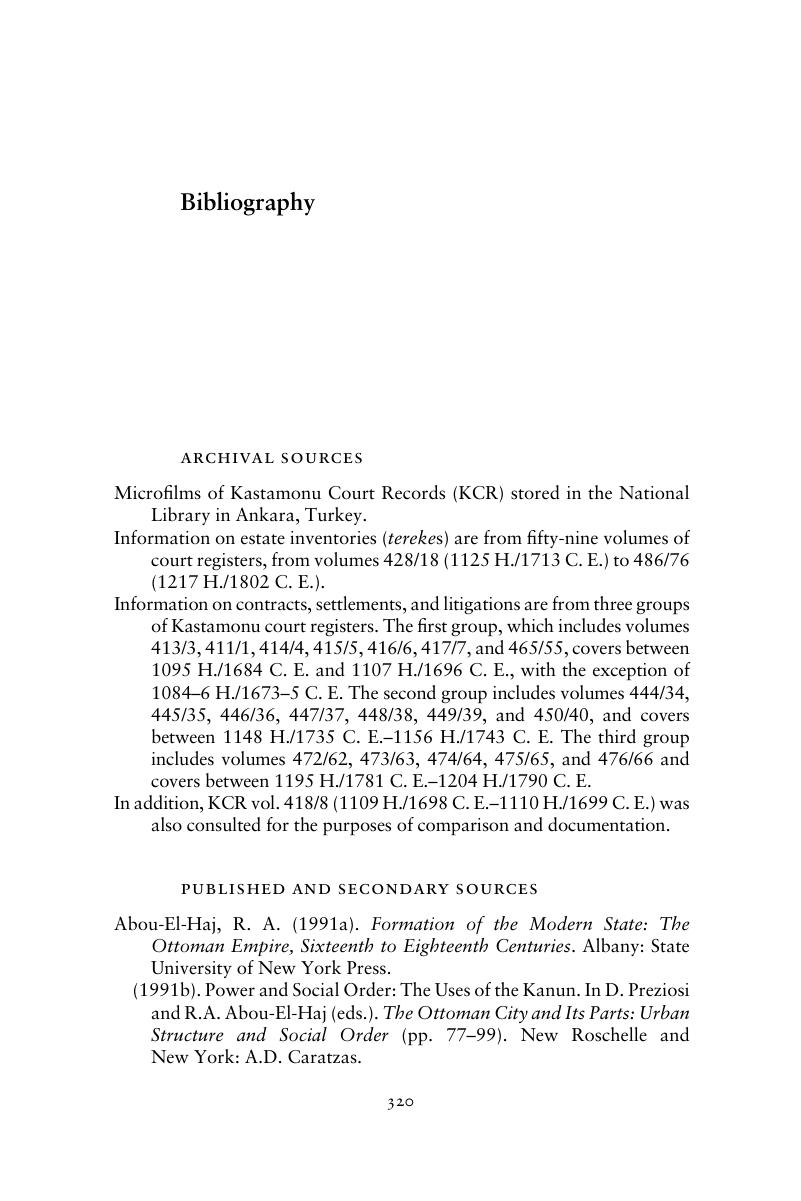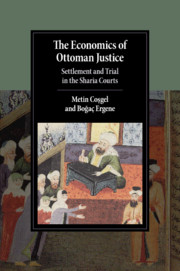Book contents
- The Economics of Ottoman Justice
- Cambridge Studies in Islamic Civilization
- The Economics of Ottoman Justice
- Copyright page
- Contents
- Figures
- Tables
- Maps
- Maps - PDF Only
- Book part
- Introduction
- Part One Methodology and Background
- Part Two The Court and Court Clients
- Part Three To Settle or Not to Settle
- Part Four Litigations
- Conclusion
- Bibliography
- Index
- Other Titles in the Series
- References
Bibliography
Published online by Cambridge University Press: 13 October 2016
- The Economics of Ottoman Justice
- Cambridge Studies in Islamic Civilization
- The Economics of Ottoman Justice
- Copyright page
- Contents
- Figures
- Tables
- Maps
- Maps - PDF Only
- Book part
- Introduction
- Part One Methodology and Background
- Part Two The Court and Court Clients
- Part Three To Settle or Not to Settle
- Part Four Litigations
- Conclusion
- Bibliography
- Index
- Other Titles in the Series
- References
Summary

- Type
- Chapter
- Information
- The Economics of Ottoman JusticeSettlement and Trial in the Sharia Courts, pp. 320 - 337Publisher: Cambridge University PressPrint publication year: 2016



